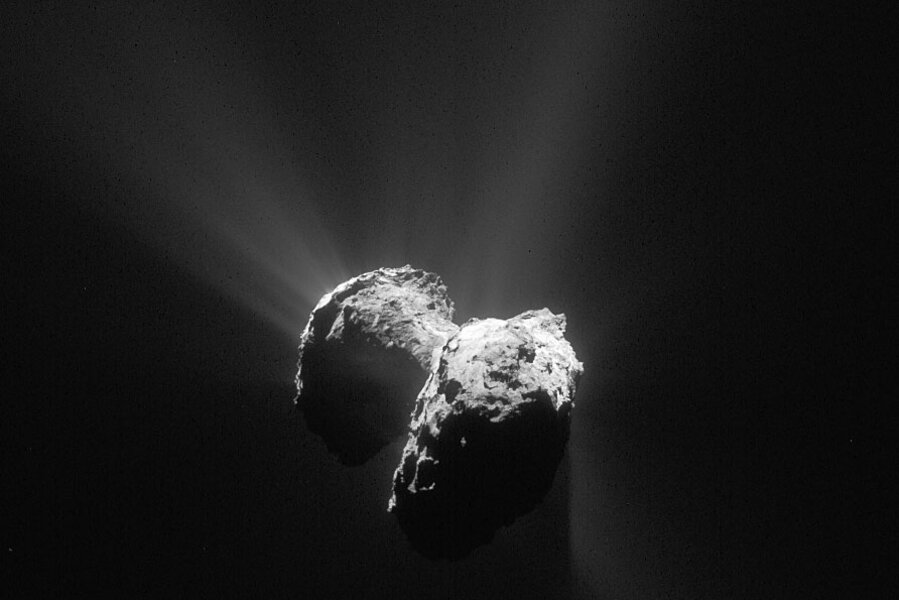How big is the risk of humongous comet striking Earth, really?
Forget asteroid impacts – some scientists now think the more dangerous scenario is a huge comet hitting Earth.
Comets circling the sun far beyond Jupiter should be a more frequent and dramatic concern for astronomers to monitor, scientists said in a study released Tuesday from the Royal Astronomical Society. The likelihood of one striking the Earth in our lifetime is pretty slim, but the potential damage warrants more monitoring, the researchers say.
The study focuses on a type of comet called a centaur, which it defines as "cometary bodies, composed of volatile ices as well as silicates, which cross or approach the orbits of one or more giant planets and are therefore dynamically unstable."
The comets in question, the authors write, are roughly 100 times the size of the asteroids closer to Earth, and they cross Earth's orbit about every 30,000 years, which is 100 times more frequent than a massive asteroid impact.
The authors of this study could represent the voice from the watchtower warning of an unpopular but impending doom, but they could also be just enthusiastic researchers hoping to stir public interest in their passion of choice by suggesting that it could wipe out civilization as we know it.
Co-author and professor at the University of Buckingham Bill Napier said tracking asteroids around the planet to calculate the possible risk of a collision is not enough to identify all the possible impact risks.
"Our work suggests we need to look beyond our immediate neighborhood too, and look out beyond the orbit of Jupiter to find centaurs," Napier said in a press release. "If we are right, then these distant comets could be a serious hazard, and it’s time to understand them better."
The study critiqued NASA's assertion the agency had discovered most of the objects that could possibly hit Earth, saying comets have been missed completely. The authors write:
The claim that the NASA Spaceguard programme has (so far) led to the discovery and orbit determination of 93 or 95% of NEOs larger than 1km in size is justifiable, so long as one recognizes that the term 'NEOs' as used there implies only asteroids in short-period (i.e. cis-jovian) orbits, and not those asteroids in and no comets at all.
Both comets and asteroids, regardless of their size, miss the classification of "planet" because they do not orbit the sun along an unobstructed path the way the planets – terrestrial and gas giant alike – do. This is one of the reasons Pluto lost its designation as a planet, and it is also the reason scientists voice concerns about asteroid and comet impacts on Earth.
Looking at how much debris is suspended around the solar system as well as Earth's near history, scientists estimate a centaur could have hit Earth in 2,350 BC and changed the course of civilization, but even crossing the path of a centaur could be dangerous.
"The effects of running through the debris trail of a large comet are liable to be complex, and to involve both the deposition of fine dust into the mesosphere and, potentially, the arrival of hundreds or thousands of megaton-level bolides over the space of a few hours," the authors wrote in the study.
The authors say centaurs cross the Earth's path every 40,000 to 100,000 years, and they have not currently found any centaurs that appear likely to do so.






